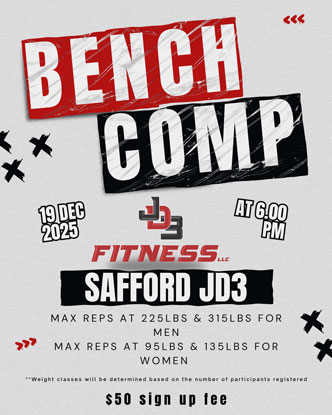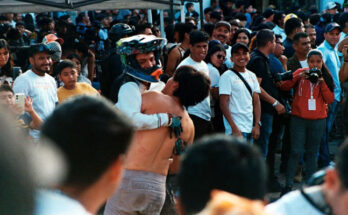Team sportswear is a tool that merges performance, unity, and innovation into one cohesive form. The design of modern sportswear balances aesthetics with technology, supporting athletes in achieving optimal performance while representing their teams with pride.
From material science to ergonomic tailoring, every decision made in the design process serves a purpose: to enhance comfort, movement, and identity. Behind every successful kit lies a series of well-considered design principles that define the quality, durability, and feel of the final product. Understanding these principles reveals how design excellence translates into athletic success and team cohesion.
Prioritizing Function Over Fashion
Performance is the heart of every sportswear design. Functionality comes before visual appeal, as athletes depend on their Custom Sports Uniforms, for example, for comfort and support in varying conditions. Designers focus on how the garments respond to movement, ensuring they stretch, breathe, and resist moisture effectively.
Fabrics are often chosen for their technical capabilities, such as wicking sweat away or maintaining body temperature during long matches. The cut and stitching patterns are tailored to specific muscle groups, reducing friction and maximizing mobility. Fashion follows performance, blending into a sleek design language without compromising athletic function.
Material Innovation and Fabric Technology
The choice of fabric can make or break the effectiveness of sportswear. Innovations in textile engineering have brought forward lightweight, high-performance materials that enhance athletic endurance and comfort. Synthetic fibers such as polyester blends and elastane provide flexibility while maintaining structure.
Advanced weaves improve airflow and moisture control, keeping athletes dry under pressure. Designers now integrate micro-perforations and laser-cut panels to increase ventilation in targeted areas. Sustainability has entered the spotlight, with recycled fibers and eco-conscious dyeing processes reducing environmental impact.
Ergonomic Fit and Body Mapping
A flawless fit defines elite sportswear. Designers use body mapping to understand how garments interact with muscle movement, posture, and impact zones. This approach leads to pieces that contour naturally to the body without restricting mobility.
Compression technology is often applied strategically to support circulation and reduce fatigue. Shoulder seams are repositioned, waistbands reinforced, and cuffs adjusted to prevent slippage during high-intensity activity. Every curve and contour is analyzed, ensuring the garment feels like a second skin.
Seamless Integration of Team Identity
Uniforms carry emotional weight, serving as visual symbols of pride and belonging. Incorporating team identity through colors, logos, and patterns requires precision and respect for tradition. Designers balance heritage elements with modern touches, creating a look that resonates with athletes and fans.
Typography, emblems, and stripe placements are carefully considered to maintain clarity and consistency across different garments. The psychological effect of wearing a unified design can boost morale and cohesion, reinforcing a sense of shared purpose. Through thoughtful detailing, sportswear becomes a medium for storytelling and legacy.
Balancing Durability and Comfort
Sportswear must withstand rigorous physical activity and frequent washing without losing its integrity. Durability begins with reinforced stitching and abrasion-resistant fabrics that can handle constant wear and contact. Toughness should not come at the expense of comfort.
Designers find equilibrium by combining resilient materials with soft inner linings and ergonomic construction. Attention to seam placement and weight distribution prevents chafing during motion. Quality testing under real match conditions helps refine durability standards.
Temperature Regulation and Climate Adaptability
Athletes face varying environmental challenges, from humid arenas to freezing outdoor fields. The ability of sportswear to regulate temperature determines performance consistency. Designers incorporate layers of breathable and insulating materials that adapt to external conditions.
Mesh zones allow airflow, while thermal linings trap warmth when necessary. Reflective coatings are sometimes applied to minimize heat absorption under direct sunlight. Innovations like phase-change materials help maintain a stable microclimate next to the skin.
Sustainability and Ethical Production
The sportswear industry is changing to meet modern expectations for environmental responsibility. Sustainable design principles influence everything from fabric sourcing to production methods. Brands are investing in recycled polyester, biodegradable fibers, and waterless dyeing techniques to reduce their ecological footprint.
Ethical manufacturing practices are gaining traction, ensuring fair labor and reduced waste. Designers approach sustainability not as an afterthought but as an integral design goal. Transparency in sourcing and manufacturing builds trust with athletes and consumers, showing that performance and ethics can coexist harmoniously in modern sportswear.
Advanced Customization and Digital Design Tools
Customization has become a cornerstone of high-level team sportswear. Digital design platforms allow for precise personalization, from player numbers to fit modifications. 3D modeling tools enable designers to visualize how garments move in simulated athletic conditions, refining every detail before production.
Laser printing and sublimation techniques create sharp, durable graphics that resist fading. Customization extends beyond appearance, as teams can now tailor compression zones or ventilation placement based on position-specific needs. These advancements bridge technology and craftsmanship, providing a truly bespoke experience for professional and amateur teams alike.
Aesthetics as a Source of Confidence
While function drives design, the visual appeal of sportswear plays a psychological role. Athletes perform better when they feel confident in what they wear. Clean lines, dynamic patterns, and bold color combinations can inspire energy and focus.
Designers often draw inspiration from motion and geometry, crafting visual flows that mirror athletic grace. The way a uniform looks under stadium lights or on camera influences perception and morale. Well-designed sportswear captures the essence of movement and unity, transforming the team into a cohesive visual force.
Designing for Longevity and Legacy
The best sportswear designs transcend a single season, leaving a lasting impression on performance and identity. Longevity in design means thinking ahead, anticipating wear patterns, maintaining timeless aesthetics, and supporting athletes through changing technology. Brands that prioritize continuous improvement stay connected to athletes’ needs, refining their designs through feedback and innovation.
Legacy is built when a uniform becomes synonymous with excellence, remembered for its look and its performance on the field. The true art of sportswear design lies in creating pieces that honor the past while embracing the future.

The evolution of team sportswear reflects a collaboration between art, science, and human performance. Each design principle, whether focused on fit, fabric, or identity, contributes to an ecosystem where athletes can perform without distraction and with pride.
Excellence in sportswear arises not from a single innovation but from the harmony of many, seamlessly integrated into garments that inspire confidence and connection. The future of design in this space continues to advance toward smarter materials, ethical practices, and deeper personalization, setting new standards for how teams look, feel, and perform together.











